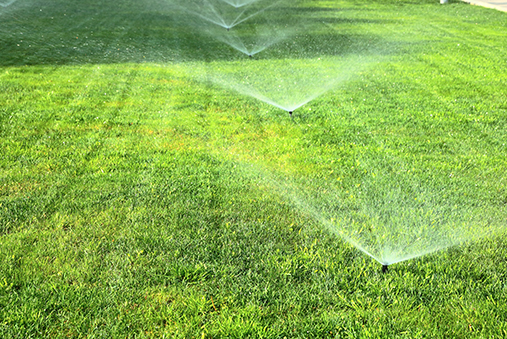Historically, we typically start turning on irrigation system in March after St Patrick’s Day. We continue until Mid-to late May. Landscapers will be out doing their spring clean-ups. Most established landscapes won’t need irrigation until May or June. If you have new Landscape plantings from last year; they may not be fully established and may need some irrigation if it starts to get warm and dry early. The average “Last day of Frost” in our area is typically around Mother’s Day. It’s good to have the system ready to go as soon as the weather turns.
If your irrigation system is turned on early; the controller is usually left in the “Off” or “Rain” position. It’s best to leave it off and then set a manual cycle if you need a little quick watering. There’s no specific date to start watering regularly as the weather changes. It’s all about the rain. A lawn will usually need about an inch of water per week. If you’re getting regular rainfall, then you would only be wasting water by irrigating.
Rain Gauge
A good idea is to get a Rain Gaugeto measure the rain that has fallen directly on your property. They go from simple to ornate in design and can be found in any garden center. When rainfall is less than an inch per week, it’s time to start watering.
One common problem we see is a “Set it and Forget” approach to watering. People will start watering first thing in the spring, on a schedule that’s based on July and August watering needs. This is probably the number one waste of water. Many controllers have Seasonal Adjustments that make it easy to start slow in spring, and then increase the irrigation run-times as it becomes hotter and dryer.
Rain Sensor
We always recommend that a Rain Sensor be connected to the controller to interrupt watering after adequate rainfall. Rain sensors do a good job of limiting water waste. Now we have a better way to conserve water and still sustain a healthy landscape.
Smart Controllers
We are now installing Smart Controllers to manage your irrigation system right from your phone, tablet, or even Alexa. A smart controller gathers data from weather stations to adjust the watering based on local weather forecasts and history. Studies have shown that a smart controller can save as much as 50% of water used for irrigation.
Hunter Industries has produced an incredible smart controller for sprinkler systems. Integrating your sprinkler system into your smart home.
Several water districts on Long Island have elected to require smart controllers on all new Irrigation systems. Nassau County requires that all new and existing irrigation systems have a water sensing device such as a rain sensor, moisture sensor, or a Smart Controller.
Please contact us for additional information on how you can Save Water for a healthier landscape.
Drip Irrigation
Drip systems provide convenience and conserve water. They deliver water exactly where your need it and limit unnecessary watering to other areas. Drip irrigation can save money.
As this mild winter winds down, we all look forward to the first signs that spring is back again for another season of wonderful color, blooms and warmer weather.
